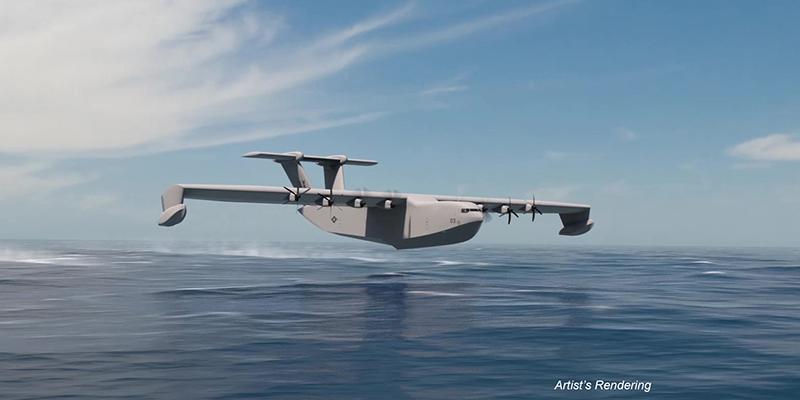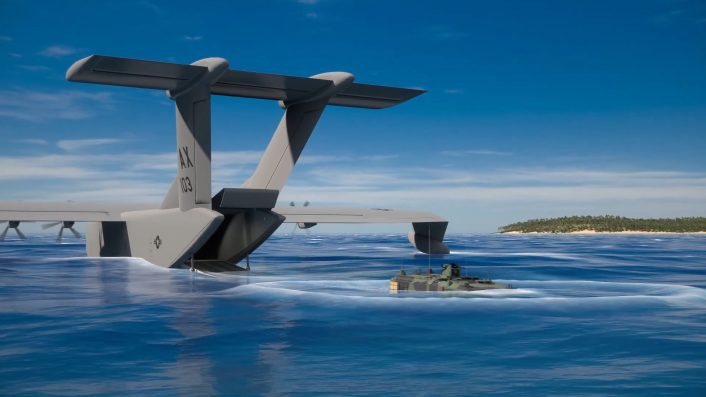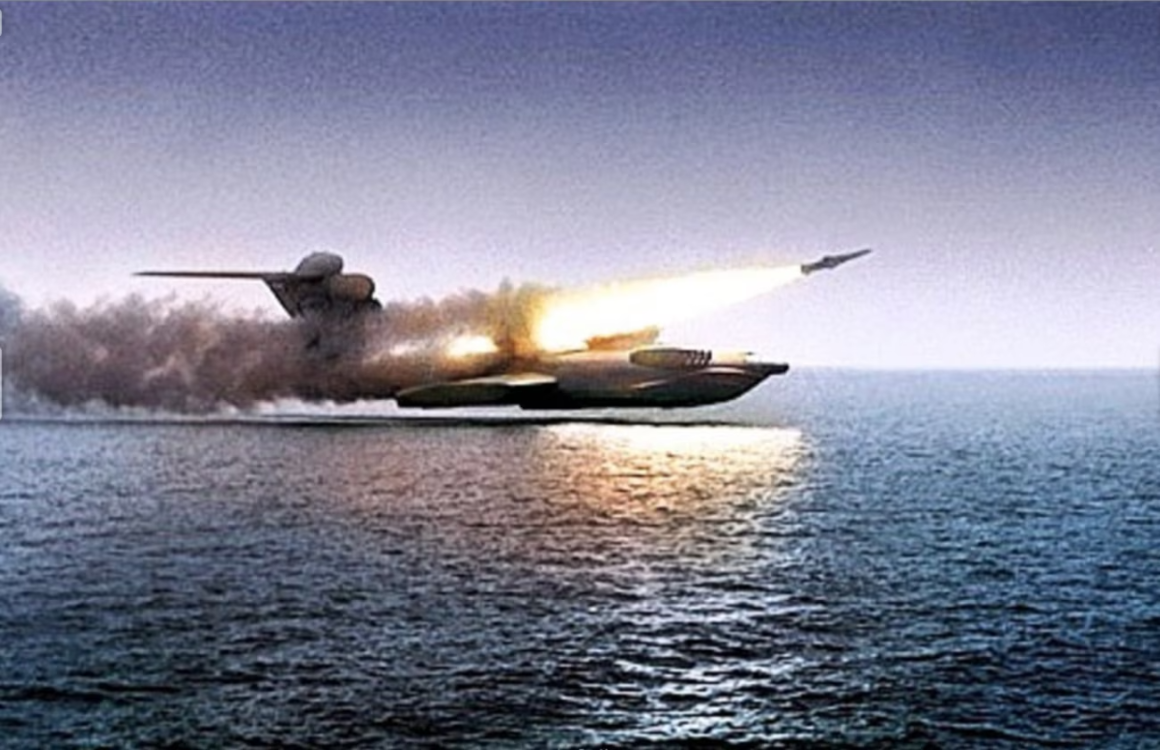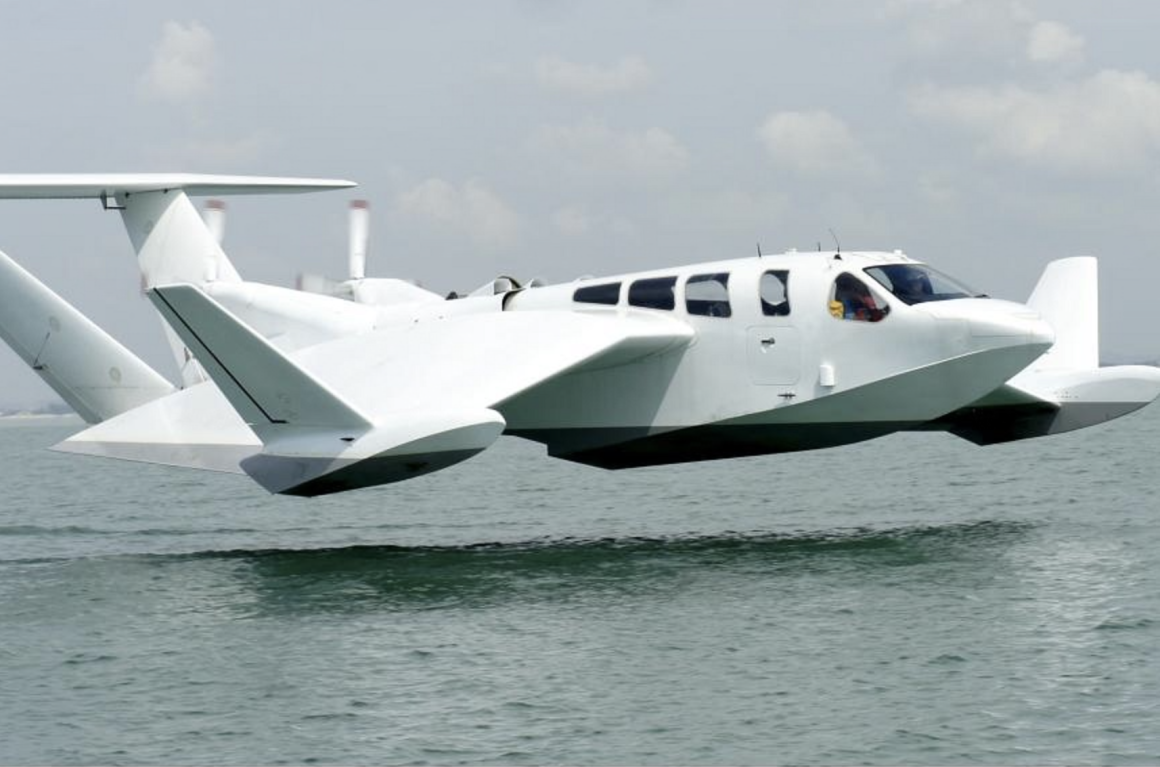Liberty Lifter, a program to develop a ground effect aircraft that could carry heavy loads while skimming over waves and up to 10,000 feet, began in 2022.
The Defense Advanced Research Projects Agency (DARPA) wanted to create an affordable and innovative seaplane for logistics, sea-based search and rescue, and disaster response missions. Under the initial plan, DARPA awarded development contracts to General Atomics and Aurora Flight Sciences.
DARPA Selects Aurora Flight Sciences for Liberty Lifter Project
In May 2024, DARPA selected Aurora Flight Sciences to continue development of the new Liberty Lifter aircraft. The initial task was to build an aircraft that could float and fly, transporting materials at the scale of a ship at the speed of an airplane. Aurora, part of Boeing, has produced a design that promises to fly in ground effect, carry heavy loads, and operate without a runway or shipping port.

The Aurora preliminary design features a 213-foot wingspan and is capable of carrying 50,000 pounds of cargo. The plan is for the aircraft to be similar in size to the C-17 Globemaster III. Aurora’s concept has a single hull, a high wing, and eight turboprops. They expect it to be able to land in sea conditions with waves up to five feet and to fly close to the surface over waves up to eight feet high.
Liberty Lifter’s First Flight Scheduled for 2029
The current timeline is for Aurora to be ready for a DARPA preliminary design review in the first quarter of Fiscal Year (FY) 2026. They are also planning for a first flight in FY2029.

Although DARPA ultimately selected Aurora to proceed with the Liberty Lifter in 2023, it initially selected General Atomics to develop a design. The General Atomics version had twin hulls, a mid-wing, and twelve turboshaft engines.
Ground Effect Produces More Lift at Very Low Altitudes
One of DARPA’s main requirements for the Liberty Lifter was that it would be a ground effect aircraft. Ground effect is a condition that results in more lift and less drag as an aircraft’s wings get close to the ground or sea level.
The intensity of ground effect is due to the size of the wingtip vortices, which are air currents that swirl around the tips of aircraft wings. When a wing moves closer to the ground or water, the vortices are not as strong because they strike the ground and dissipate. This effect results in less drag and more lift.
Soviets Designed Ekranoplan to Threaten NATO Forces
The Liberty Lifter is not a new concept in aviation. In 1966, the Soviet Union designed its first ground effect Lun-class Ekranoplan aircraft. They planned to develop 340-foot-long boat-aircraft hybrids that could attack NATO submarines and aircraft carriers. The first Ekranoplan was then the largest aircraft in the world, and they built two of them.

The Soviets announced its top speed of 311 mph, although some reports put it at 460 mph. They designed it to fly between six and twenty feet above the water. It also had six launchers mounted along the top of its fuselage, capable of firing nuclear missiles.
Soviet Ground Effect Aircraft Fails to Meet Project Goals
The massive Ekranoplan had a unique look, like a vehicle from a steampunk or science fiction movie. Some referred to them as “Sea Monsters.” Despite initial success in flying, the Ekranoplans never met the Soviet goals. Bad weather and high waves kept them from operating safely. The last one went down in 1980 and sank to the bottom of the Caspian Sea.

Although not operational, one of the remaining Ekranoplans has been sitting at a military dock in the Daghestan region on the Caspian Sea coast. Plans are in place to tow it to the nearby city of Derbent to display it in a Russian patriotic park.
Other groups are considering building ground effect aircraft for military and commercial purposes. In 2022, Russia announced it was selling six smaller Ekranoplans to Iran. Also, a company in Singapore, Wigetworks, is developing an aircraft they call the “Airfish.”
Wigetworks Developing Commercial Wing-In-Ground Aircraft
The Airfish is a ground effect plane, which Wigetworks also calls a “Wing-In-Ground” aircraft, an International Maritime Organization (IMO) designation. According to IMO guidelines, Wing-in-Ground craft “are supported in their main operational mode solely by aerodynamic forces which enable them to operate at low altitude above the sea surface but out of direct contact with that surface.”

The Airfish has a 49-foot wingspan, is 56 feet long, and is powered by two automotive V8 engines that use standard gasoline. It also has a crew of 1-2 and can carry up to 9 passengers.
Credit: avgeekery.com










